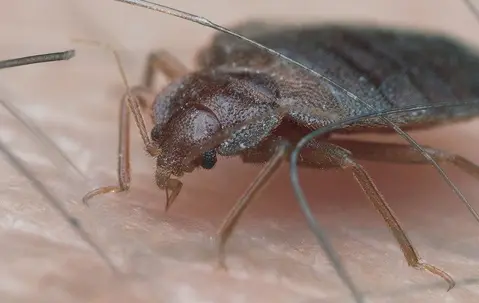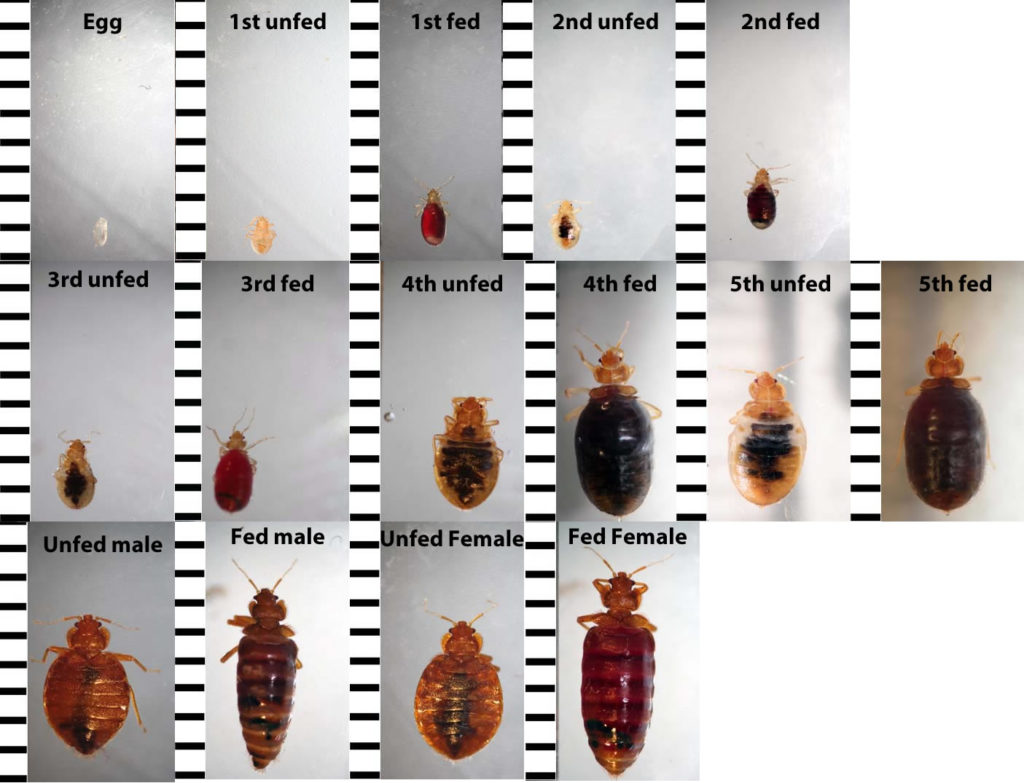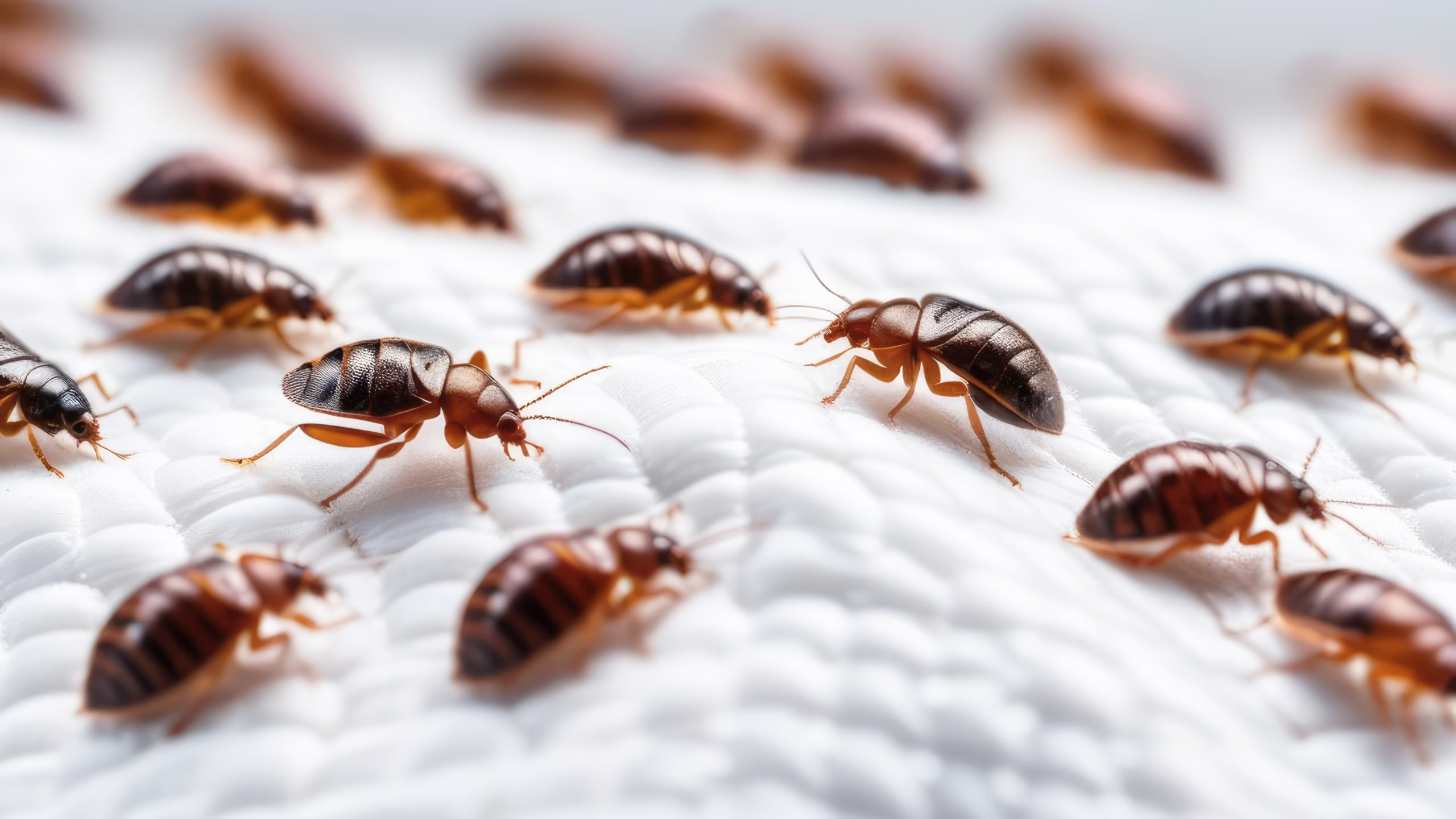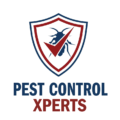Bed Bug Treatments in Florida
Exterminator Services for Haines City, Lake Alfred, Winter Haven, Lake Wales, Davenport, and Polk City
Florida’s subtropical climate—featuring consistent warmth, moderate winters, and elevated humidity—provides ideal conditions for many pests, including bed bugs. These tiny, parasitic insects feed on human blood, often emerging at night from hidden cracks or seams in furniture and bedding. In regions such as Haines City and neighboring communities (Lake Alfred, Winter Haven, Lake Wales, Davenport, and Polk City), bed bug infestations can develop quickly if left undetected and untreated. Busy tourism, frequent travel, and a year-round mild climate allow bed bugs to spread through homes, apartments, hotels, and other dwellings in short order.
This service page explores why bed bugs thrive in Florida, the red flags signaling their presence, and why turning to a professional bed bug exterminator is essential for safe and complete eradication. While it may be tempting to tackle these pests with do-it-yourself products, bed bugs’ resilience and rapid breeding cycles demand advanced strategies. By understanding their habits, vulnerabilities, and recommended control methods, property owners in the Haines City area can protect their residences and commercial buildings from persistent bed bug invasions.
Why Bed Bugs Flourish in Florida

1. Year-Round Warmth
Bed bugs prefer temperatures between 70°F and 90°F, which aligns seamlessly with much of Florida’s climate. Even during the state’s cooler months, brief cold snaps rarely drive bed bugs to dormancy or kill them off. Because heated interior spaces remain comfortable year-round, these pests can stay active and reproduce continuously.
2. Abundant Travel and Movement
From Haines City to Lake Alfred or Davenport, Florida’s tourism and bustling population create ideal conditions for bed bug spread. They often hitch rides in luggage, clothing, or personal belongings, moving freely between hotels, rental properties, and private homes. Short-term rentals and frequent visitors increase the risk of bed bugs finding new hosts and establishing colonies.
3. Adaptability to Human Habitats
Bed bugs hide in tight seams, cracks, and crevices—like mattress edges, box springs, behind baseboards, or even inside wall voids. This ability to embed themselves makes them difficult to spot initially. Because Florida’s housing often includes air conditioning, bed bugs remain comfortable indoors, feeding regularly on sleeping occupants at night.
4. Minimal Seasonal Decline
Unlike colder states that see bed bug activity slow during harsh winters, Florida’s climate rarely dips low enough to disrupt their breeding. Without a natural seasonal die-off, bed bug populations can build steadily in the Haines City region, requiring vigilant detection and professional treatment to control them.
Telltale Signs of Bed Bugs
1. Unexplained Bites
Bed bug bites typically appear as small, red welts, often lined up or grouped on exposed areas—like arms, legs, neck, or face. Bites may itch for several days or cause minor swelling. Because reactions vary, some individuals show more pronounced bite marks while others notice little irritation, allowing infestations to progress unnoticed.
2. Dark Specks or Stains on Bedding
A common bed bug indicator is finding tiny, dark spots on sheets or mattresses. These can be bed bug excrement or small, rusty blood smears from feeding. If you rub these spots with a damp cloth, they often smear into a reddish or brownish stain. Examining pillowcases, bed sheets, and mattress seams may reveal these signs before encountering live bed bugs.
3. Shed Skins and Eggs
As bed bugs grow through multiple life stages, they shed pale, translucent exoskeletons. These discarded shells build up where bed bugs cluster, like mattress corners or behind headboards. Eggs are small and whitish, roughly the size of a pinhead, and can appear stuck to surfaces in hidden cracks or fabric seams. Observing any combination of cast skins and egg remnants strongly indicates active infestation.
4. Musty or Sweet Odor
In heavier bed bug infestations, occupants sometimes detect a faint, musty-sweet smell. This odor stems from bed bug pheromones and accumulated debris in their nesting areas. While it’s less definitive than physical clues like bites or blood spots, an unexplained odor can reinforce suspicions.
5. Sightings of Live Bugs
Adult bed bugs are roughly the size of an apple seed—reddish-brown, oval, and flattened before feeding. They become more plump and darker after a blood meal. Nymphs are smaller and lighter in color. Spotting a live bed bug moving in folds of sheets, along bed frames, or in upholstered furniture is a strong indicator that a hidden colony exists.
Risks of Ignoring Bed Bugs
1. Rapid Reproduction
Female bed bugs can lay many eggs weekly once they start feeding, quickly turning a few overlooked insects into a significant colony. Each egg hatches into a nymph that matures within weeks under favorable conditions. Delaying action gives these pests time to spread to more rooms or units.
2. Sleep Disruption and Stress
Waking to new bite marks or the thought of bed bugs feeding at night can cause anxiety, sleep deprivation, and overall stress. Families with children or sensitive individuals may experience ongoing restlessness and heightened concern about the cleanliness of their living space.
3. Potential Allergic Reactions
Some people develop strong allergic responses to bed bug saliva, experiencing red welts, swelling, or intense itching that can lead to secondary infections if scratched excessively. Persistent bites can become more than a minor nuisance if they provoke severe discomfort.
4. Spreading to Neighbors or Adjacent Units
In multi-family housing or tightly spaced neighborhoods, bed bugs can move through shared walls, vents, or conduits, expanding their reach. Failing to contain an infestation in one apartment or home in Lake Alfred or Winter Haven, for instance, risks broader community impacts that require collective efforts to resolve.
5. Damaged Reputation for Businesses
For hotels, motels, or rental property owners in popular spots like Davenport or Lake Wales, even a single bed bug complaint can spark negative online reviews or deter guests. Quick, professional extermination is crucial to prevent reputational harm and uphold customer confidence.

Why a Professional Exterminator Is Crucial
1. Accurate Identification of Bed Bugs
DIY attempts can misidentify bed bugs as other pests (e.g., carpet beetles or fleas), leading to wasted resources on ineffective remedies. A trained bed bug exterminator recognizes bed bug signs, species, and nest locations, tailoring treatments to specific vulnerabilities that ensure thorough eradication.
2. Advanced Treatment Methods
Standard pesticide sprays rarely kill bed bugs inside deep cracks, behind walls, or in hidden eggs. Professionals use specialized heat treatments, insect growth regulators, steaming devices, or carefully targeted residual insecticides. These advanced techniques reach concealed bed bugs and eggs, reducing the odds of reinfestation.
3. Minimizing Chemical Exposure
Improper pesticide application can pose risks to inhabitants or pets. Skilled exterminators apply products methodically around baseboards, bed frames, or furniture seams while limiting occupant exposure. Clear reentry guidelines protect families, making sure insecticides dry or ventilate adequately before normal activity resumes.
4. Coordinating Multi-Unit Strategies
In apartment complexes or attached homes, bed bug problems often spread between units. Professionals plan integrated approaches, simultaneously treating adjoining areas and advising property managers on best practices. This coordinated effort prevents bed bugs from fleeing into adjacent residences or returning once one unit is cleared.
5. Follow-Up and Verification
Because bed bug eggs can hatch weeks after initial treatments, a thorough extermination plan includes second visits or close monitoring. If any survivors reappear, exterminators refine methods until bed bugs and their future offspring are entirely eliminated. This ensures long-term protection rather than temporary respite.
Typical Methods for Bed Bug Treatments
1. Inspection and Mapping
An exterminator starts by inspecting bedrooms, living areas, furniture cushions, and other potential hiding places. They note droppings, shed skins, eggs, or odor that signals significant infestation. This comprehensive search helps locate all active zones—like mattresses, headboards, recliners, or baseboards.
2. Heat Treatments
Raising the temperature above 120°F for several hours kills bed bugs at all life stages, including those hiding deep within walls or furnishings. Technicians set up specialized heaters and fans to circulate hot air evenly. Residents usually vacate during the process, returning once the home cools down.
3. Chemical Applications
Some professionals use residual sprays targeting cracks, crevices, bed frames, or furniture edges. These solutions kill bugs on contact and leave behind a protective film that eliminates stragglers or hatchlings. Occupants may leave briefly to let rooms dry and ventilate, returning once it’s safe.
4. Vacuuming and Steaming
High-temperature steam directly applied to cushions, upholstery seams, or corners kills bed bugs on contact, including eggs. Vacuuming further removes debris and live insects. Many exterminators blend steam or vacuuming with chemical treatments, maximizing coverage and reducing egg survival rates.
5. Mattress Encasements
Sealing mattresses and box springs in bed bug–proof encasements traps remaining insects inside, depriving them of food. This also prevents new bed bugs from nesting in these areas. Keeping encasements on long-term (at least a year) ensures any eggs inside eventually die off.

Service Areas
Haines City
Haines City, located in central Florida’s Polk County, has experienced growth in residential and commercial developments, attracting families and seasonal visitors alike. Whether you own a home by one of the local lakes or run a small business serving tourists, bed bugs can arrive through luggage, secondhand furniture, or travel. A professional bed bug exterminator in Haines City conducts meticulous inspections and multi-stage treatments to address active infestations while blocking new pests from settling.
Lake Alfred
A small but charming city in Polk County, Lake Alfred features a blend of quiet neighborhoods and scenic lakefront properties. Unfortunately, bed bugs can infiltrate even the most well-maintained homes, particularly when residents or guests travel frequently. Experienced pest control professionals tailor bed bug elimination to Lake Alfred’s mix of property styles, ensuring discreet and thorough solutions.
Winter Haven
Known for its chain of lakes, Winter Haven offers recreational opportunities that draw locals and tourists year-round. This steady flow of travelers provides bed bugs with frequent transportation into accommodations, rental properties, or personal residences. Whether you manage a lakeside Airbnb or a local rental community, swift bed bug treatments restore confidence among guests and tenants.
Lake Wales
With historical charm and a range of local attractions, Lake Wales stands out in central Florida. Despite its appeal, bed bugs can thrive in warm, protected indoor spaces if left unnoticed. Engaging a bed bug exterminator in Lake Wales addresses infestations quickly, preventing them from impacting your home’s comfort or a commercial site’s reputation.
Davenport
Davenport, situated close to theme parks and Orlando’s tourist attractions, frequently hosts visitors in hotels, motels, or rented homes. High visitor turnover can inadvertently spread bed bugs if diligent inspections and prophylactic treatments aren’t performed. Partnering with professionals ensures that bed bugs don’t tarnish the city’s hospitality or quality of life.
Polk City
Nestled near major highways, Polk City sees steady traffic and community growth. Bed bugs may enter through travelers’ belongings, deliveries, or secondhand items. Local pest control specialists apply advanced bed bug treatments designed for the area’s climate, ensuring that property owners can swiftly eliminate infestations and reduce future risks.
Why Our Bed Bug Treatments Excel
1. Florida-Specific Experience
We combine years of experience with insight into the Sunshine State’s bed bug behaviors and climate-driven challenges. Familiarity with how bed bugs move through tourist-heavy or residential communities in areas like Haines City or Davenport shapes our approach, ensuring we apply reliable, localized solutions.
2. Thorough Inspections and Customized Action Plans
Every infestation is unique. Our bed bug exterminator team inspects all possible nesting spots—mattresses, furniture joints, baseboards, or adjacent rooms—to isolate the source and intensity of the problem. Based on these findings, we propose heat treatments, chemical applications, or integrated methods best suited to your property’s layout.
3. Emphasis on Safety
We focus on occupant well-being by selecting proven pesticides safe for humans and pets when applied according to guidelines. During heat treatments, we carefully monitor temperatures to avoid harming non-target items. Clear instructions on reentry times or ventilation ensure a smooth, worry-free process.
4. Preventive Education and Follow-Up
Bed bug treatments work best when supplemented by occupant diligence. We explain how to routinely check bedding for signs of bugs, handle laundry securely, and manage secondhand purchases to avoid reintroducing pests. If hatchlings appear after the initial treatment, our follow-up visits address these survivors, cementing a bed bug–free environment.
5. Quick Response, Long-Term Peace of Mind
Delaying bed bug treatment invites more bites and bigger colonies. Our prompt scheduling in Haines City, Lake Alfred, Winter Haven, Lake Wales, Davenport, or Polk City cuts short the infestation window. Coupled with comprehensive coverage of every life stage, we deliver lasting relief so you can sleep soundly again.
Next Steps
If you’re waking up to mysterious bites, finding dark specks on bed sheets, or spotting suspicious insects near mattresses or couches, don’t wait. Contact us to learn more or schedule your service. Early intervention prevents bed bugs from multiplying further and ensures swift, effective solutions.
Our specialized treatments—calibrated for Florida’s climate—employ advanced methods like whole-room heat applications, insect growth regulators, or thorough vacuuming and steaming. Whether you own a family home in Haines City, manage an Airbnb in Winter Haven, or rent apartments in Lake Wales, a dependable bed bug exterminator can restore comfort, protect your investment, and preserve a positive reputation in your community. Reclaim your space and peace of mind by acting decisively against bed bugs.
Maintaining a Bed Bug–Free Environment
- Inspect Mattresses and Furniture Regularly
Lift mattresses to check seams, corners, or box springs for dark spots or shed skins. Peek behind headboards and examine furniture cushions. Catching early signs of bed bugs can drastically cut treatment complexity. - Encasements for Mattresses and Box Springs
Use bed bug–proof covers that enclose these items fully, trapping or preventing bugs from nesting inside. Check encasements monthly for tears or gaps, replacing them if damaged. Keep covers on for at least a year to outlive any hidden eggs. - Be Cautious with Secondhand Items
Thoroughly inspect used beds, couches, or other upholstered pieces before bringing them indoors. Vacuum or steam them if feasible. Bed bugs frequently spread through pre-owned furniture, so it pays to be vigilant. - Wash and Heat-Dry Linens
Launder bed sheets, pillowcases, and blankets in hot water, followed by a high-heat dryer cycle weekly. The heat eliminates bed bugs and their eggs. Be especially mindful of items used by guests or after travel. - Limit Clutter Around Sleep Areas
Bed bugs hide in clothing piles, under furniture, or among scattered personal belongings. Keep floors and under-bed spaces tidy. Organize items in sealed plastic containers to reduce the number of hiding spots. - Stay Aware While Traveling
Check hotel mattresses and headboards for bed bug indications. Store luggage on stands, not on floors or beds. Upon returning, consider washing trip clothes on a hot cycle. This simple step intercepts potential hitchhikers. - Monitor for Recurrence
Even after successful extermination, remain attentive to possible new bites or dark flecks on bedding. Early detection of a re-infestation or newly introduced bugs from external sources prevents a small setback from becoming major.
By blending these preventive measures with comprehensive bed bug treatments tailored to Florida’s environment, residents and business owners from Haines City to Lake Wales can keep bed bugs at bay. While the region’s climate supports near-constant pest activity, a diligent approach—backed by professional expertise—ensures that these night-biting intruders never gain a permanent foothold. By maintaining cleanliness, periodically inspecting furnishings, and promptly addressing any suspicious findings, you protect your property and restore a restful, worry-free space.
